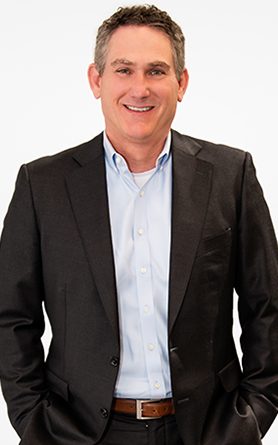New FPA Chair Charts New Ventures
AI and FPA’s Four Pillars Are at the Center of Russell Grissett’s Agenda

When Russell Grissett first began experimenting with artificial intelligence (AI), he found it to be a useful tool for organizing complex ideas, drafting content, and examining issues from different angles.
“What I found fascinating—and valuable—was how AI could accelerate decision-making by cutting through noise, offering clear summaries, or suggesting next steps,” says Grissett, president and CEO of TOPPAN Packaging Americas.
Grissett also found a use for the technology in his personal life. “It is great at planning family vacations down to the hour,” he says.
Thanks, in part, to his personal experience, Grissett has emerged as an advocate for AI within TOPPAN, which this year acquired the thermoformed and flexible packaging division of Sonoco Products Co. Grissett had previously served as the Sonoco division’s president.
At the same time, Grissett is taking on a broader leadership role as chair of the board of directors for the Flexible Packaging Association (FPA). His two-year term began in early March 2025.
Numerous resources are available to executives and managers who want to learn about AI. As chair of FPA, Grissett plans to focus on legislative, regulatory, and sustainability issues confronting the flexible packaging industry.
“What we are trying to do with FPA is extremely focused,” he says.
Grissett spoke recently with FlexPack VOICE® about his new role as board chair as well as his experience with AI, a technology rapidly gaining ground in the workplace.

FlexPack VOICE®: What do you see as the chief role of the board chair?
Russell Grissett: The primary role is to be a strong advocate for our industry—helping us to communicate the incredible work our member companies are doing for their stakeholders. It’s also about ensuring we stay focused on delivering against our strategic mission, which is to advance the industry through advocacy, education, and relevance. Working alongside FPA President and CEO Dan Felton, the board, and our members, I help steer alignment with our four strategic pillars: Advocate and Protect, Educate and Inform, Relevance and Expansion, and Association Strength. This means constantly evaluating whether we’re delivering value, maintaining relevance, and positioning the association for long-term growth.
FPV: What would you like to accomplish as board chair?
RG: First, I want to ensure our story is well understood, especially the role flexible packaging plays in reducing greenhouse gas emissions, improving material efficiency, and supporting a circular economy. This directly ties to our Educate and Inform and Advocate and Protect pillars. Second, I want to grow the association’s reach and impact. One of the ways we achieve stronger advocacy is by having broader representation across the flexible packaging value chain. Increasing membership—one of our key strategic goals—also strengthens our financial foundation and enables further investment in resources that matter, like well-crafted extended producer responsibility policies, harmonized labeling standards, and science-based legislation. Another of my specific goals is to add 75 new members by 2027. Expanding our membership makes our advocacy more powerful, our resources more robust, and our collective voice stronger.
FPV: What qualities do you bring to that role that will help you thrive in it?
RG: I bring a deep passion for the flexible packaging industry and a long-standing belief in its power to improve lives. I also bring a practical leadership style that focuses on outcomes, particularly in advancing our strategic pillars and ensuring we’re maximizing value for our members. With a background in operations and strategy, I understand the importance of turning vision into execution, and I’m committed to helping the FPA deliver measurable progress across its mission areas.
FPV: What do you see as the top challenges facing the industry that the association and board are best positioned to address?
RG: Some of the biggest challenges include managing an increasingly complex regulatory environment, including tariffs and materials bans; addressing misperceptions that cast flexible packaging as waste rather than a sustainable solution; strengthening our policy influence through coordinated advocacy, maximizing tools like the FlexPAC®—FPA’s political action committee—and building relationships with key agencies and coalitions; and keeping our members informed and future-ready—a core goal of our Educate and Inform pillar.
FPV: What are the most significant opportunities?
RG: One is leading the industry forward on sustainability. Our members are innovating across materials, formats, and processes. Another is expanding the recognition and relevance of flexible packaging in the public and policy arenas. Lastly, I see an opportunity in the growth of industry and associations to expand our influence and reach.
FPV: How has FPA evolved since you first joined?
RG: When I joined, there was less regulatory complexity, but today’s environment demands a coordinated, unified voice to help inform legislative and regulatory stakeholders. That’s where FPA plays a critical role. Today, it’s a dynamic, growing organization with strong leadership. The smooth transition from former FPA President and CEO Alison Keane to Dan Felton is a testament to the strength of FPA and the culture we’ve built. We’re more aligned than ever on our mission and goals.
FPV: What are the biggest changes you’ve seen in your career?
RG: Technology has advanced rapidly—from smart packaging to automation and now AI—helping improve efficiency, quality, and sustainability. Regulatory scrutiny has increased, requiring greater engagement with policymakers. The role of packaging has evolved from simply protecting products to also enhancing user experience and reducing environmental impact. Meanwhile, consumer expectations have shifted toward more sustainable and recyclable solutions, driving innovation across the supply chain.
FPV: What role, if any, do you see for AI in flexible packaging?
RG: AI is still in the early stages. But we’re already seeing its impact on supply chain forecasting, analytics, predictive maintenance, and workforce training. On the shop floor, AI has the potential to improve productivity and quality, and over time, it will help streamline operations and accelerate innovation.
FPV: How have you been using AI in your work?
RG: I use it every day. For example, I attend numerous meetings on various complex topics that I’m not an expert in. Let’s say it’s an esoteric but important accounting topic or a detailed technical conversation around a specific resin, I’ll go on AI, and say, “Give me a 12th-grade level, 100-word summary of what this topic is.” It brings you up to speed, and then you can say, “Give me a Ph.D.-level, 500-word summary going deeper.” It helps bring you up to speed rapidly.
FPV: How are you deploying AI more broadly at TOPPAN and where do you see its potential?
RG: We’re beginning to explore how AI can enhance operational efficiency, particularly through supply chain forecasting and performance analytics. It also holds promise for training programs to help operators, engineers, and technicians onboard more rapidly. Many of our highly skilled technical personnel, who have a deep understanding of our materials, are starting to retire. They learned by spending time with more seasoned technical people and then learning who to call when they had a question. Junior technicians today can ask AI to provide a summary of very technical content, and then when they make the call to someone with industry experience, they’re having a much deeper conversation. There’s nothing like experience, and it doesn’t give you that. But it gives you the ability to become educated on extremely specific technical concepts. It’s been life-changing to see the rate at which our engineers come up to speed.
FPV: What kinds of guardrails do you put around the use of AI?
RG: One is that you have to assume that there’s false information coming out of AI. You have to verify everything, and you still have to run it through the heuristics of logic. We’re also finding that prompt engineering is important. How you ask a question matters. Consistently asking the same question tends to draw consistent answers. And it can be subtle, the difference in a comma, the difference between the specific words you use. So, sharing what prompts work is critical. Another is to edit. If you’re asking AI to write a Word document for you, well, it’s your Word document. You need to read the Word document. You have to double-check it. Third, you need to communicate with your stakeholders. If you’re sending analytics that have been done by AI, for example, you need to say that. Everyone needs to know. You must be very transparent. But the positives far outweigh the negatives.
FPV: Do you have formal training around those things such as crafting prompts and applying logic to the results? Or are these mostly informal experiences that people share within the workplace?
RG: We started off with formal training. The key is to get people to start using it. So, step one is to convince everyone to try AI, and that required, in the early stages, some formality: “Here it is, use it to plan your vacation, use it to plan dinner.” What we’ve found is that there are always early adopters. And if you can find one strong advocate in each department who shows their coworkers how they took something hard and voluminous and turned it into something much more efficient, then other people will adopt it. That seems to be much more effective than formally saying, “Everyone needs to do this.”
FPV: How do you convince late adopters or skeptics to start using AI?
RG: At our meetings, we have individuals share examples of how a routine task has become easier due to their use of AI. People can choose whether to use it. But over time, if you demonstrate what’s easier and logical, people tend to migrate to that. So, it’s really just constantly being an advocate and showing how it works. We also demystify it. AI sounds more complicated than it is. But it’s just a prompt. You ask a question. You don’t have to understand how it works. You have to know that it’s not always accurate. Over time, you find more and more people naturally utilize it, especially now that things like [Microsoft] Copilot are resident within your system. You don’t even have to go to a separate website.
Joel Berg is a freelance writer and editor based in Pennsylvania.


